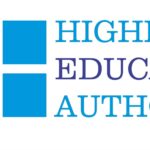Zambia’s education system has made significant strides over the years, but it still faces numerous challenges that hinder its ability to provide quality education for all. Here are the top five challenges currently impacting Zambia’s education system.
1. Access to Quality Education
While Zambia has made progress in increasing enrollment rates, many children, particularly in rural areas, still lack access to quality education. Schools in remote locations often suffer from inadequate facilities, insufficient teaching materials, and a shortage of qualified teachers. As a result, many children drop out or do not receive a proper education, contributing to high illiteracy rates in certain regions.
2. Teacher Shortages and Training
A significant challenge facing Zambia’s education system is the shortage of qualified teachers. Many educators lack the necessary training and professional development to deliver quality instruction effectively. This shortage is exacerbated by low salaries, which make the teaching profession less attractive. Consequently, many schools struggle to maintain adequate staff, leading to overcrowded classrooms and diminished learning outcomes for students.
3. Infrastructure Deficiencies
Inadequate school infrastructure is a major barrier to effective education in Zambia. Many schools lack basic facilities such as classrooms, libraries, and sanitation facilities. Overcrowded classrooms with insufficient desks and learning materials make it difficult for students to focus and learn effectively. Additionally, poor infrastructure can deter students from attending school, particularly during the rainy season when roads become impassable.
4. Quality of Curriculum and Relevance
The relevance and quality of the curriculum in Zambia are often criticized for not meeting the needs of the economy or the aspirations of students. Many educational programs focus on rote learning rather than critical thinking and practical skills. As a result, graduates may find themselves ill-prepared for the job market. There is a pressing need for curriculum reforms that align with the demands of the local and global economy and promote skills development.
5. Funding and Resource Allocation
Limited funding for education remains a significant obstacle in Zambia. The government faces challenges in allocating sufficient resources to schools, which impacts everything from teacher salaries to the availability of learning materials. Despite various initiatives to improve funding, the education sector often competes with other pressing national priorities, leading to inadequate investment in schools and educational programs.
Zambia’s education system is at a critical juncture, with various challenges that need urgent attention to ensure quality education for all students. Addressing issues such as access, teacher shortages, infrastructure, curriculum relevance, and funding will require concerted efforts from the government, non-governmental organizations, and communities. By tackling these challenges head-on, Zambia can create a more equitable and effective education system that prepares its youth for the future.






